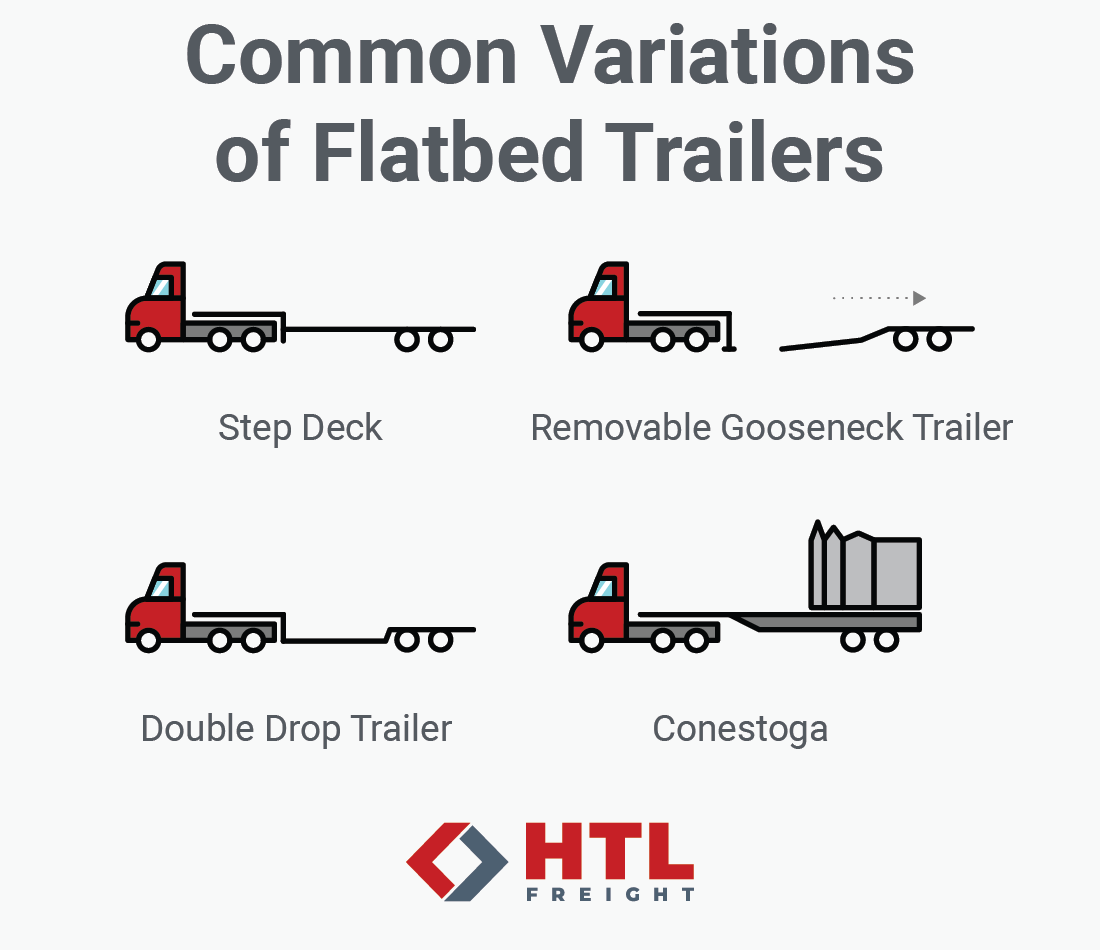
Flatbed trailers are essential in shipping and transportation. Most businesses rely on transporting freight and equipment from one place to another. However, you may not realize there are several types of trailer types that range in size and structure. This variety plays a huge role in getting just about everything hauled.
Just like having the right container, such as a reefer trailer for environment-sensitive products, there are distinct types of flatbeds that may work better for specific assignments. It is important to review these differences and then relay all of the appropriate specifications of your equipment or products. These simple steps could save both time and money while making it easier to load and unload in the run.
Why is There so Much Variety in Flatbed Trailers?
Flatbed shipping is a mode of transportation that uses an open trailer that has no surrounding walls or roof that covers the items loaded. Flatbed trailers are typically used for freight that cannot fit inside a dry van trailer or would be too heavy. Then, there are variations and modifications on the standard flatbed to ensure that some freight isn’t too large or heavy to be on the road or to allow for easier loading and unloading. Here are some of the most common flatbed trailers that are used:
Step Deck
Step deck trailers, also known as drop deck trailers, are a version of the flatbed trailer consisting of a bottom and top deck. These trailers are designed to allow for the transport of freight that would normally exceed height restrictions. Step deck trailers have a bed that drops lower than standard flatbed trailers after clearing the tractor, which allows for up to 2 feet of extra overhead clearance. Additionally, many step decks come with some sort of ramp which makes the loading of certain freight much easier. The maximum load weight for a step deck trailer is 48,000 pounds.
Conestoga
Conestoga trailers are specialized flatbeds with solid armor along with a retractable tarping system that allows extra security and protection for the freight enclosed. In comparison to other trailers that use basic tarps that can be damaged en route, conestoga trailers offer more protection. The versatility of this type of trailer makes it a highly requested flatbed trailer. The risk is lower as well when loading and unloading the freight from this type of trailer. The Conestoga trailer has a legal maximum freight weight of 42,000 pounds to 45,000 pounds.

Removable Gooseneck Trailer (RGN)
A removable gooseneck trailer is a type of flatbed that is built to carry tall and long freight. The freight usually consists of oversized machinery and equipment allowing the trailer to go up to the maximum legal load weight of 42,000 pounds. The trailer is easily detachable from the truck which can form a ramp for the machinery to be loaded onto easily. An RGN trailer can be expensive to use because it is considered a more specialized trailer.
Double Drop Trailer
Similar to single-drop trailers, double-drops have a center portion that drops lower than either end, creating an open crater space. Since this type of trailer has lower ground clearance, it is mostly used for taller or oversized freight that is too large or long for a standard step deck trailer. You must always be aware of the legal dimension restrictions and choose the flatbed for your freight. The maximum legal freight weight for a stretch double drop is 45,000 pounds and a crane is often used to load and unload the freight due to size or weight.
So, as you can see, there is a lot of variety just within flatbed trailers! And most of these types have even further variations such as an extended step deck. When you have the special kind of freight that requires these more niche trailers it is important to be partnered with a shipping provider that has experience in flatbed shipping.
At HTL Freight, we have over 35 years of experience in the industry and a large focus on flatbed shipping. So, if you find yourself in need of shipping anything from steel beams to an entire house reach out and we’ll see how we can help.